The Witcher 3: Blood and Wine – A pocket guide to Toussaint to prepare you for the expansion
The second add-on to The Witcher 3, Blood and Wine, takes us to a whole new region – Toussaint – pulled straight out of a fairy tale and chivalric romance. Find out what awaits Geralt by reading our guide to this curious land.

For months, we were kept in the dark about the second expansion to The Witcher 3: Wild Hunt, entitled Blood and Wine, knowing nothing except that it will be set in the land of Toussaint. This name may not ring any bells for the average gamer, but I suppose that the hearts of those who have read the books of Andrzej Sapkowski skipped a beat upon seeing it. After all, that’s where a large portion of the last volume of the so-called Witcher Saga (namely The Lady of the Lake) took place – and, due to the uniqueness of the spot, it was an episode which firmly stuck in the memory of many a reader. That’s why we have decided to refresh your memory and/or familiarize you with what can be expected from the adventure of Geralt of Rivia in this fairytale-like duchy. Since Toussaint is a land with a very distinct vibe, it will certainly not hurt if you learn its characteristics before you let CD Projekt RED take you on this journey. Read on!
Although the following article is based mostly on the information included in the last volume of the book series by Andrzej Sapkowski, I hasten to reassure those who haven’t had the chance yet to read the entire series that you won’t find any spoilers on the main plotline of the Saga (and almost no spoilers on minor plotlines).
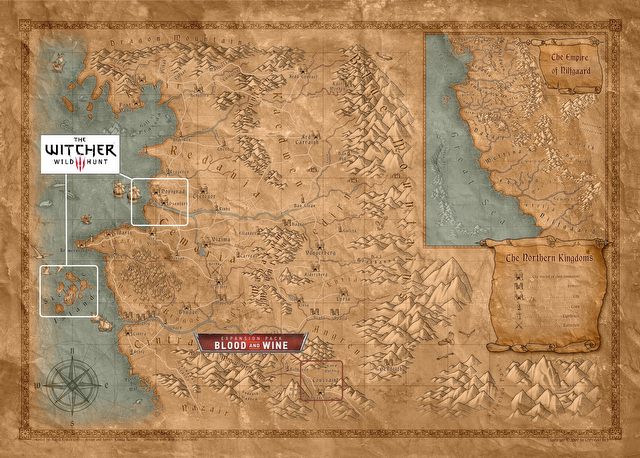
The world map (as presented in the first Witcher) marking the main locations from The Wild Hunt and the Blood and Wine add-on.
Once upon a time, in a land far, far away
First, you have to realize that the Duchy of Toussaint is located far from the areas where the events of The Wild Hunt and Hearts of Stone took place – far down south, beyond Temeria, Mahakam, and the Yaruga river, more or less at the latitude of Cintra and Amell Mountains (take a look at the map above). In other words, deep in the territory of Nilfgaard. Consequently, there is no doubt that to reach that land, we will have to rely on fast travel and wait for a good amount of data to load. That’s why one can get all the more curious as to the reason behind Geralt’s long trip. But since we’d be playing a guessing game, let's leave this issue aside for now.
What’s important, Toussaint is surrounded by natural borders in the form of mountain ranges – the only way in and out of the Duchy are the four mountain passes, leading to different parts of the world. This makes this particular piece of land a very attractive setting for the plot of a Witcher 3 expansion. Especially given its relatively large size – according to CD Projekt RED, the size of the new area in Blood and Wine is comparable to the Skellige Islands from the base game.
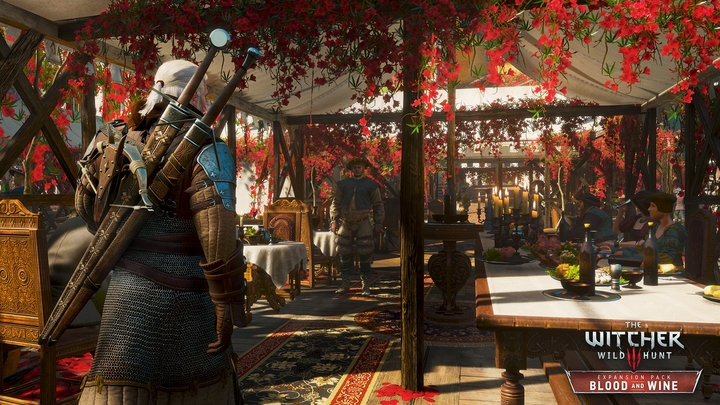
Natural borders provide one more advantage – thanks to them Toussaint comes off as a completely different world, an alternate reality, when compared to the neighboring countries and the rest of the Continent. The general characteristics of this small state are best introduced by Andrzej Sapkowski himself, speaking through the words of the sorceress Fringilla Vigo:
Toussaint is generally considered to be a little fairytale duchy, silly and unreal, and, because of its wine-focused economy, in a state of perennial drunkenness and unchanging reckless joy. As such, it is taken seriously by virtually nobody, and gets to enjoy certain privileges. After all, we are the most prominent supplier of wine, and life without wine, as we all know, is no life. This is why in Toussaint the are no agents, spies or secret services. Toussaint does not need an army; a bunch of blindfolded knights-errant is enough, as we are never attacked.
Sounds intriguing? And how different from the gloomy Velen, the corrupted Novigrad, or the Nordic-like Skellige Islands! Let's take a closer at the "fairytale dutchy."
It is worth mentioning that Toussaint is home to a branch of the dwarven Cianfanelli Bank, where Geralt opened an account some time ago, and where he amassed a small fortune by completing various witcher assignments for the vineyard managers (during the events of The Lady of the Lake). Could those funds become the gateway to buying ourselves a home in Blood and Wine, the rumors of which have been making rounds on the Internet in the last couple of weeks? In addition, the bank could be used for currency exchange, as payment in Toussaint is accepted exclusively in thalers and hellers.
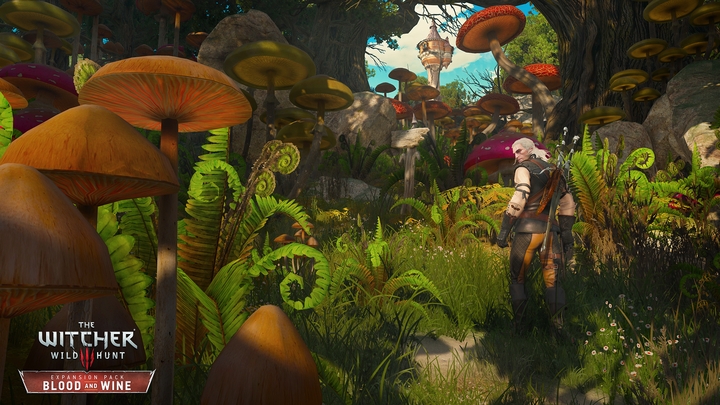
Toussaint is not so saint
As it was previously mentioned, Toussaint is theoretically a part of Nilfgaard – in practice, however, any influence from the empire is hardly to be seen. Residents of the duchy have little to no interest of what is going on beyond the mountains, and the feeling seems to be mutual as no one from the other side tries to extend their influence to this country either. Assuming that nothing has changed over the years that passed between the events of The Lady of the Lake and those of The Wild Hunt, while playing Blood and Wine, we probably won’t feel as if we were in the heart of the “evil empire”.
The credit for this state of affairs goes to Toussaint's ruler – Her Illustrious Highness the Duchess Anna Henrietta, also known as Anarietta. Since the death of her husband, Prince Rajmund (an event that took place about a decade before, and in which Dandelion played an instrumental, if indirect, role; but we'll talk about it more in a moment), the Duchess reigns alone... and doesn't let herself be particularly bothered by politics. When Geralt appeared at her court in Beauclair during the events of The Lady of the Lake, she was oblivious to the fact that there was a war raging between Nilfgaard and the Northern Kingdoms just outside of the borders of her domain – although the main culprit in this case was the minister who did not want to "worry" and "disturb" Her Highness. When the war was eventually brought to her attention (by no one other than Geralt himself), the first thing she did was to order the hapless minister to be imprisoned in the tower. Then, she had one of her subordinates send the emperor an angry diplomatic note demanding him to "immediately, instantaneously cease all military aggression and make peace", confident that it will bring the war to a swift resolution.
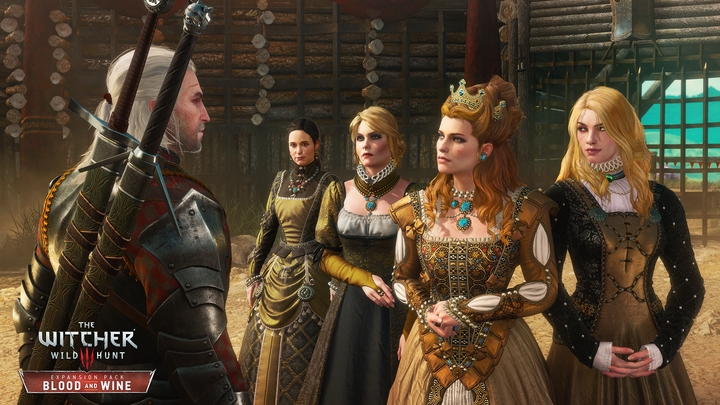
Dispite this attitude (or perhaps because of it), the people of Toussaint love their ruler, as she is interested in what seems to be the main interest of the duchy's residents as well – namely banquets, balls, tradition, maintaining a thriving wine industry, poetry, and court affairs in Beauclair. All this, plus dalliances. "Ha, Beauclair is a strange place indeed, and a charming one at that, full of love and its beauty", as stated by one of the knights-errant keeping Geralt company. The land's daily agenda includes knights flirting with ladies and vice versa, courting, poetic love declarations, messages carried by page boys in colorful costumes, secret trysts... and infidelity. Think about that ball in the Vegelbud Residence, the one which Geralt attends together with Triss to complete one of the quests in The Wild Hunt, and imagine it multiplied. How strange an atmosphere reigns over Toussaint is shown clearly by the example of a succubus "menacing" Beauclair. The ladies-in-waiting (spearheaded by Anna Henrietta herself) hired Geralt to get rid of her... which he did not, after a passionate request – backed by remarkable generosity – from the duchy’s numerous courtiers and knights. Perhaps unsurprisingly, but it's an interesting thing nevertheless, there are hardly any brothels to be found in the duchy.
Speaking of knights – they are another one of Toussaint's peculiarities. As I mentioned, the duchy does not maintain a regular army, instead the knights-errant secure its borders. What's more, they don’t defend the land against invaders (as no one has any interest in actually attacking it), but from bandits who harm the wine trade by harassing caravans of merchants distributing this lovely beverage around the world. The book, however, pays more attention to the manners and the code of chivalry, as Sapkowski openly mocked the medieval knight ethos and the chanson de geste tradition. Knights of Toussaint often "talk like morons", sing silly songs and are dangerously prone to solemnly swearing absurd oaths on any occasion. For example, at a feast in Beauclair one of them swears on a heron to refrain from drinking, while the other vows to cover one of his eyes with a scarf and hide his name under a pseudonym until the day he puts down a specific number of bandits on the mountain trails... And all these courageous, honorable warriors are being paid from the duke's personal vault – by lining up by the right window once a month.
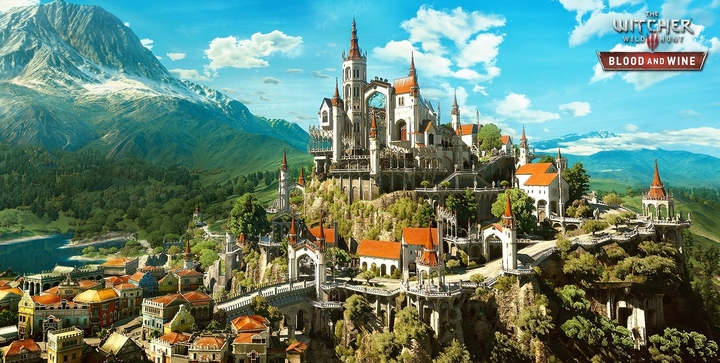
Dungeons and Scolopendromorphs
As you can see, Toussaint is a fairly idyllic land. Its fairytale-like character is further emphasized by geography and architecture. The palace in Beauclair, the focal point of the duchy's life and culture, is an elven building distinguished by ornamental design and numerous slender, soaring towers (which can be seen in the above screenshot). But this is not the only such building in the duchy. Small castles and chateaux are scattered throughout the whole region – both inhabited and ruined ones – and surrounded by undulating vineyards that stretch for miles. Thanks to the mountains encircling the land, Toussaint has a rather warm microclimate, which is very beneficial to the development of the wine industry. In other words, we can expect landscapes somewhat resembling the Mediterranean region. While the forests are rather scarce, no one will be able to complain about the lack of variety, at least when we consider the numerous lakes and rivers (such as Sansretour).
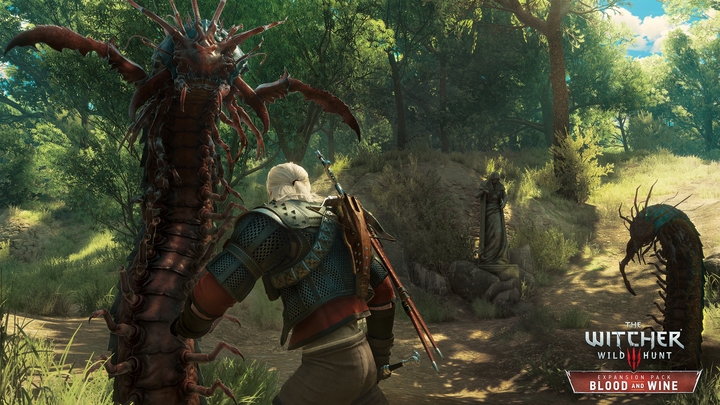
What appears on the surface, however, is just half of the attractions offered by this land. Toussaint also features an extensive network of caves and underground structures. Virtually every small winery can boast a cavernous basement, which usually connects to the unexplored complex of dungeons that stretches for miles under the duchy's lands, and encompasses natural caves, ancient mines and elven ruins alike. You would expect such a nice, vast, underground lodging to be inhabited. Bingo. In The Lady of the Lake Geralt hunts down various, more or less common, monsters (including a Cockatrice) and meets intelligent humanoid creatures, such as a Gremlin or a Korred (also known as Rumpelstilt). In short, my guess is that no player will be able to complain about the shortage of question marks to discover on the map in Blood and Wine. In terms of plot, Toussaint doesn’t lack incentives to explore the dungeons either – in the book the witcher was often swarmed by vineyard managers asking him to cleanse some cellars that would provide an absolutely wonderful storage space for wine, if not for the monsters (and in the face of war and disrupted trading routes the need for warehouses is greater than usual).
One of the sayings often heard in Toussaint is: "The tradition says so, and so it is sacred." A good example of said tradition would be the Feast of Vat, taking place in October. In the course of the feast two scantily-clad young maidens (The Fair) are carried by enthusiastic men (The Young) into the vat, and then crush the grapes with their bare feet, accompanied by the celebrating crowds, music, and performing jugglers. All this to celebrate the end of the harvest and the beginning of the preriod of wine production.
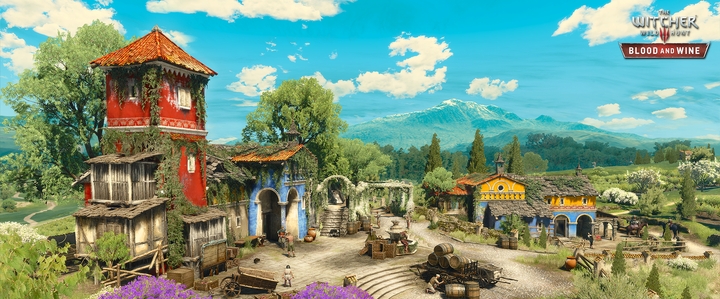
Lovers and friends
As we slowly approach the end of our guide, let's go back to matters concerning, well... socializing, so to speak. In the Hearts of Stone we were offered the company of Shani; and so the second add-on should provide the players with an opportunity to conquer the heart of a beautiful woman, perhaps even more than one – especially if we are dealing with a place as "charming and full of love and its beauty" as Toussaint. Perhaps CD Projekt RED will acknowledge the source material and the player will somehow cross thier paths with the sorceress Fringilla Vigo, who was closely associated with Geralt during his first stay in Beauclair (The Lady of the Lake), but played a rather marginal role in The Wild Hunt (besides, her family is of Toussaint origin). Still, it would be rather difficult to find a convincing plot justification for Fringilla's presence at the court of Anna Henrietta – unless we assume that the storyline of Blood and Wine would be accessible only after the completion of the base game – therefore it is equally as likely that we will have an affair with someone else. It may even be a completely new character (or characters).
As for our friends, I couldn’t imagine embarking on this adventure without Dandelion. Or should I say Julian Alfred Pankratz Viscount de Lettenhove, as this is the name under which the famous bard is known in Toussaint. You need to know that during the events of The Lady of the Lake Dandelion was Anna Henrietta's official favorite, and he even had a kind of sincere, blind love for her. Dandelion's dalliance with the duchess – whom, by the way, he called "his little weasel" – began a few years back, when the abovementioned prince Raymond was still alive. During one of the absences of the Toussaint's ruler (as he was busy visiting his mistress in Cintra), the bard managed to make a cuckold of the Duke by making the Duchess fall in love with him, and was lucky enough to depart before the news of the affair had made it to the eyes and ears of her spouse. Still, the incident "brought his blood to the boil," causing Raymond to die of a stroke shortly after ("in bed," on the occasion of one of his regular acts of marital infidelity). And since the people of Toussaint had little to no love for the late Duke, Dandelion, as the Duchess' favorite, subsequently became quite popular in the country.
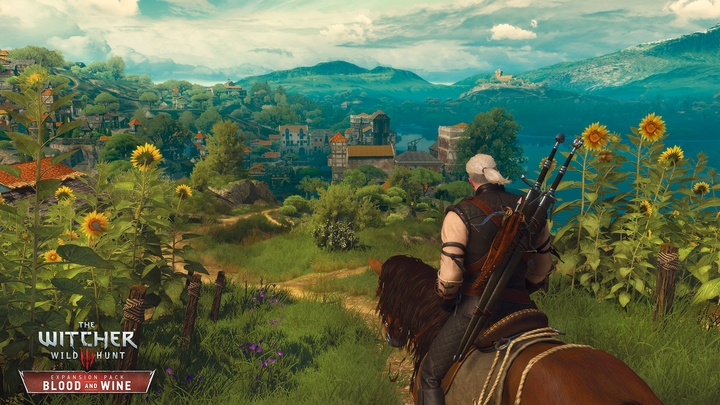
When the party was forced to flee from Toussaint (The Lady of the Lake), left in Beauclair was the manuscript of the original version of Dandelion's book, Half a Century of Poetry, in which he described Geralt's past adventures, among other things. Correct me if I'm wrong, but that could be some prime collectible material – text fragments scattered all over Toussaint, introducing the player to, or reminding them of, the earlier adventures of the White Wolf.
Unfortunately, his luck did not last for long. After a few months, Viscount Julian became tired of monogamy (this is Dandelion we’re speaking of) and his dreams of becoming a Duke came to an inglorious end when he was caught in flagranti with the young baroness Nique. The bard himself barely managed to avoid the scaffold thanks to a last minute pardon, which sentenced him to exile instead. Despite this rather tense goodbye, Dandelion's feelings for Anarietta remained strong, as did his hope for "his little weasel" to forgive him sometime in the future. Perhaps his wish will be granted, roughly six years later, during the events of The Wild Hunt? And could it be that Dandelion is the reason why Geralt decides to depart for Toussaint? Of course, the bard's possible participation would also mean that the contents of Blood and Wine won’t be available from the beginning of The Witcher 3 (and it’s not even about the character level restrictions). Nevertheless, Dandelion's presence in this land is way too obvious – and way to entertaining – a motive to even think that we could be deprived of it. Moreover, he is also one of the characters whose presence wasn't truly felt in the base game (at least not directly).
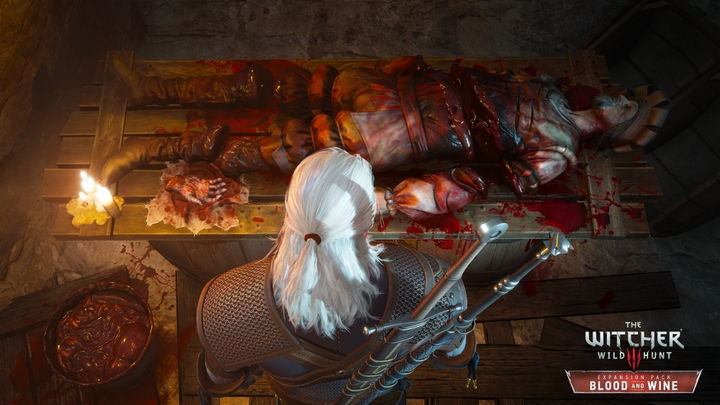
Blood or wine?
Judging by the setting itself, we are allowed to expect that in the second expansion to The Witcher 3 CD Projekt RED will treat us to an equally wonderful experience as it did in Hearts of Stone. In fact, for this add-on to be good, it would be enough if the developers managed to do justice to Toussaint's unique atmosphere – and we have seen on numerous occasions that the "REDs" have a knack for making faithful and vivid recreations of the world created by Andrzej Sapkowski. Now, I don’t know about you, but I already can’t wait for the moment when I ride down the mountain pass into the valley of Sansretour, meet the first group of knights-errant, and see for myself that "graceful castle pleasing to the eye”, as the palace in Beauclair was described by one of Geralt's companions from the books. And although the question marks dotting the map in the base game annoyed me eventually, I will be happy to comb every corner of this "silly and unreal fairytale duchy". May the virtual visit to Toussaint turn out to be just as memorable as the episode of The Lady of the Lake that took place there. And let’s hope we won’t have to wait for it longer than until the middle of this year...

